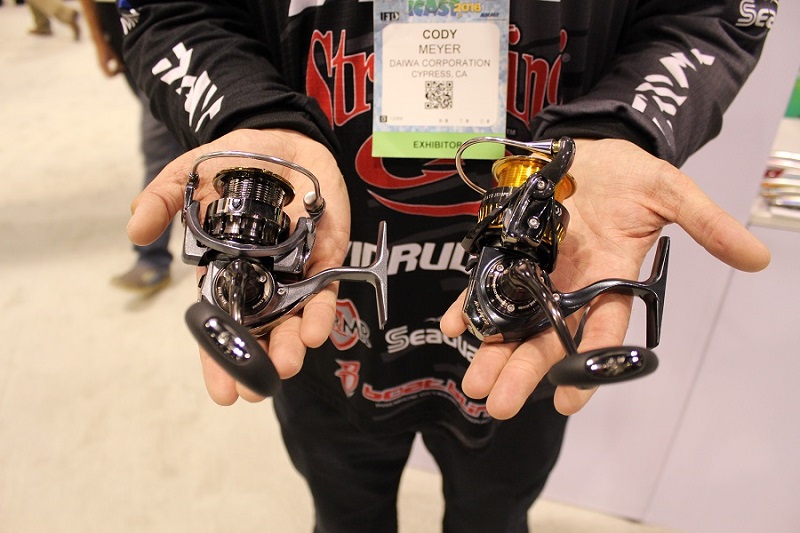 Photo: Daiwa Magsealed Demo
Photo: Daiwa Magsealed Demo
FLW Tour pro Cody Meyer has gained the reputation as one of the best finesse fishermen in the world. He is an excellent all-around angler, but excels when fishing light line and in tough conditions. One of the most important tools for any finesse fisherman is a good spinning reel and Meyer believes there are several keys to finding the perfect spinning reel and shares them in this article.
A Good Drag For a Spinning Reel
Big fish on light line need some extra work getting them safely to the boat. One of the most important things is having a good drag to make sure you do not break your line. Meyer agrees with this statement and it was the first thing he mentioned when asked what he looks for in a spinning reel.
“I look at a couple things, but a good drag is number one; it’s vital,” he began.
He feels that with light line and small hooks, playing a fish until they are ready to be landed is the only way to have success. “When you are using 6, 7, or 8-pound test, you have to be able to give them drag and let them run or you are asking to get your line broken,” said the Daiwa pro.
Retrieve Speed
So much is made of retrieve speed and gear ratios when talking about baitcast reels, but it is not talked about as often with spinning gear. Instead of the actual speed, Meyer looks at the amount of line that is retrieved per handle.
Spinning reels are also measured in gear ratio, but the line retrieve is something with more importance according to Meyer.
“I want something that has more than 30-inches of line per handle,” he said. “All of the Daiwa spinning reels I use have more than that and it really helps to pick up line quickly when a big fish is racing to the surface to jump.”
In addition to fighting fish, the line retrieve also comes into play when you are fishing lures quickly and covering water with your finesse fishing.
Smoothness
Who doesn’t like a smooth retrieve? It is one of the first things that people notice when trying a reel for the first time and it is something that Meyer feels is important when deciding which spinning reel to use.
“Obviously, I like a smooth retrieve,” he said. “It makes it so much better when you are working a lure or fighting a fish.”
Beyond just the nice feel of a good retrieve, he believes “smooth” has a practical use that can help you land more fish.
“Having a reel that is well-built ensures that you are not fighting the gears the whole time,” said the California pro. “Also, if you have one small hiccup in a retrieve, you could end up losing a fish if you give them too much slack.”
The Insides of a Spinning Reel
Many spinning reels look great cosmetically. They are shiny and look like they are built to last. According to Meyer, a reel must also have a well-built frame, solid bearings and gears.
The reels he uses have Magsealed parts to ensure they last and do not become corroded due to water getting inside. This is one of the quickest ways to ruin a reel and the magnetic oil helps to reduce friction between the rotor and reel body.
“All of the Daiwa reels I use from the Luvias to the Steez are Magsealed,” he added. “hey are higher end reels; but with the way they are built they will last a long, long time.”
Size Matters
Most spinning reels come in several sizes. Which one is best for you? It comes down to preference as well as practical use. They vary widely in size, weight and line capacity within one model of reel.
Some prefer a 1000 size for the smaller profile and lighter weight, while some like the 4000 size for more line capacity. Meyer decides to stick with a middle-of-the-road size and prefers a 2500 for most of his finesse fishing. This gives him the right line capacity as well as average overall size.
“It’s really the perfect size for me, not too big and not too small,” said Meyer. “The other thing I like about that size is the handles are usually the perfect size and easy to grab and hold if it is rainy. The smaller reels just have too small of a handle for me.”
Selecting a spinning reel can be a difficult decision with so many good ones on the market. For noted finesse angler and FLW Tour pro Cody Meyer, it comes down to having a quality reel built to last.



 Advertising
Advertising